


FRANZ PETER SCHUBERT 1797 -
The Austrian composer Franz Peter Schubert, like Beethoven, bridged the Classical and Romantic periods. His symphonies, sonatas and early chamber music were formal in composition, but full of romantic, imaginative melody. He is mostly remembered today for his “Unfinished” Symphony of 1822, and his Trout Quintet, but apart from a great deal of chamber music, he also produced over 600 lieder, or songs. Often written as settings to poetic works by writers such as Goethe, Scott and Heine, they testify to his profound melodic gift, and have earned him the title “father of German lieder”. Notable among them are his tender Ave Maria, Gretchen at the Spinning Wheel and the song cycles The Miller’s Beautiful Daughter and A Winter’s Journey. A prolific composer from childhood, his output included nine symphonies, 21 piano concertos, 15 string quartets, his Octet in F, and a number of operettas, but only his songs were appreciated in his lifetime. His work influenced, among others, Schumann, Brahms, Dvorák and Bruckner. He led a Bohemian existence for much of his life, and died from typhus at the age of 31.
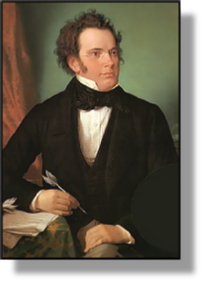 xxxxxThe Austrian composer Franz Schubert is probably best known today for his “Unfinished” Symphony of 1822, and his Trout Quintet, seven years later. But apart from a great deal of chamber and piano music, he was of course the undisputed song master of his own day, and perhaps of all time. He produced more than 600 lieder or songs which, like The Beautiful Maid of the Mill of 1823, his tender Ave Maria of 1825, and his A Winter Journey two years later, were full of emotion and melody. It is not surprising that he has become known as the father of German lieder.
xxxxxThe Austrian composer Franz Schubert is probably best known today for his “Unfinished” Symphony of 1822, and his Trout Quintet, seven years later. But apart from a great deal of chamber and piano music, he was of course the undisputed song master of his own day, and perhaps of all time. He produced more than 600 lieder or songs which, like The Beautiful Maid of the Mill of 1823, his tender Ave Maria of 1825, and his A Winter Journey two years later, were full of emotion and melody. It is not surprising that he has become known as the father of German lieder.
xxxxxSchubert was born in Vienna, the son of a parish schoolmaster. He learnt to play the piano and violin as a child, and was taking lessons on the organ at the age of nine. In 1808 he became a choirboy at the Imperial Chapel, and within two years was composing for the piano, and producing the first of his countless songs, such as Hagar’s Lament and The Patricide. In 1813 he wrote his first symphony, and the following year he produced his first opera, The Devil’s Pleasure-
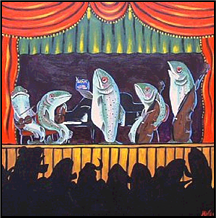 xxxxxThe following year, 1816, he left for a while the teaching post he had acquired in his father’s school, and concentrated exclusively on his music. Over the next four years, in addition to a plethora of songs, he produced some of his finest instrumental works, including his 4th and 5th symphonies, sonatinas for violin and piano, and his Trout Quintet. His play with music, The Twin Brothers, was only a moderate success, but to this period belongs his music for the melodrama The Magic Harp, and for the Twenty-
xxxxxThe following year, 1816, he left for a while the teaching post he had acquired in his father’s school, and concentrated exclusively on his music. Over the next four years, in addition to a plethora of songs, he produced some of his finest instrumental works, including his 4th and 5th symphonies, sonatinas for violin and piano, and his Trout Quintet. His play with music, The Twin Brothers, was only a moderate success, but to this period belongs his music for the melodrama The Magic Harp, and for the Twenty-
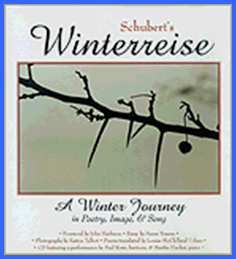 xxxxxThe last eight years of his life were among his most productive. He wrote his Mass in A-
xxxxxThe last eight years of his life were among his most productive. He wrote his Mass in A-
xxxxxApart from summer holidays and two visits to Hungary, where he worked as a music teacher to Count Esterházy’s family at Zseliz, he spent his entire life in Vienna. There he passed a Bohemian existence, eking out a living by the occasional sale of one of his compositions. When this source of income failed, as it did in 1824, he was obliged to go to Zseliz to replenish his funds. At this time, in particular, be became deeply depressed, upset above all by his failure to gain recognition for his stage productions, and self conscious, so it would seem, about his humble origins and upbringing. He wrote to a friend that he was “the most unfortunate and miserable being in the world”. Nonetheless, he continued to work flat out, producing compositions across the musical spectrum. Indeed, it was probably overwork and a syphilis condition that contributed to his early death. In November 1828 he quickly succumbed to a bout of typhoid after drinking some unclean water. He was just 31 years of age. Ironically, the only public concert that Schubert ever gave -
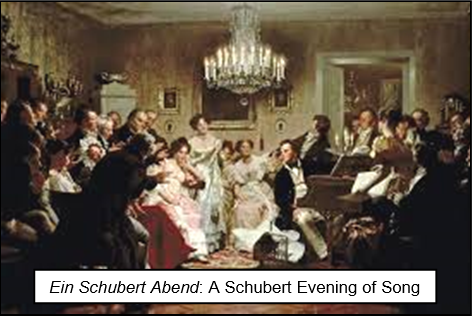 xxxxxAlthough his symphonies, sonatas and early chamber music conformed to formal classical outline, the richness of his harmony and melody, his emotional expression, and his emphasis on originality, place him firmly amongst the early Romantics, together with composers like Felix Mendelssohn, Carl Weber, Frédéric Chopin and Robert Schumann. Like Ludwig van Beethoven, his work bridged the Classical and Romantic periods. His skill as an instrumentalist is probably best appreciated in his symphonies, particularly his 9th, an inspired and well constructed work. These symphonies, whilst overshadowed in their time by those of Beethoven, show a great deal of innovation and originality. His songs, the only branch of his composition which was fully appreciated in his lifetime, numbered over 600, and were noted for their musical design. His finest, many produced in the early part of his career, and inspired by the romantic poetry of masters like Johann Wolfgang von Goethe, Sir Walter Scott and Heinrich Heine, showed a remarkable ability to interpret and dramatise the text, allowing the poem to engender the tune.
xxxxxAlthough his symphonies, sonatas and early chamber music conformed to formal classical outline, the richness of his harmony and melody, his emotional expression, and his emphasis on originality, place him firmly amongst the early Romantics, together with composers like Felix Mendelssohn, Carl Weber, Frédéric Chopin and Robert Schumann. Like Ludwig van Beethoven, his work bridged the Classical and Romantic periods. His skill as an instrumentalist is probably best appreciated in his symphonies, particularly his 9th, an inspired and well constructed work. These symphonies, whilst overshadowed in their time by those of Beethoven, show a great deal of innovation and originality. His songs, the only branch of his composition which was fully appreciated in his lifetime, numbered over 600, and were noted for their musical design. His finest, many produced in the early part of his career, and inspired by the romantic poetry of masters like Johann Wolfgang von Goethe, Sir Walter Scott and Heinrich Heine, showed a remarkable ability to interpret and dramatise the text, allowing the poem to engender the tune.
xxxxxHis chamber music and piano compositions influenced, among others, the German composers Robert Schumann and Johannes Brahms, and the Bohemian Antonin Dvorák, whilst his choral work was continued, with personal modification, by the great Austrian composer Anton Bruckner.


xxxxxIncidentally, Schubert wrote about 20 marches. His popular Marche militaire, a piano duet written in the summer of 1818 for the two teenage daughters of Count Esterházy, is a delightful piece, more suited to Toy Town than a real parade ground. ……
xxxxx…… Schubert greatly admired Beethoven’s work. The story goes that in 1814 he sold his overcoat in order to buy a ticket for the revival of the opera Fidelio. Later in Schubert’s career, the two men met by chance in concerts and restaurants, but there was never a close friendship between them. ……
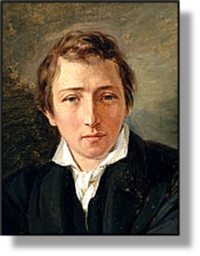
xxxxx…… Schubert,xplus other composers, set music to many lyrics written by the Romantic poet Heinrich Heine (1797-
xxxxx…… Butxtwo of Schubert’s best song cycles, The Beautiful Maid of the Mill and A Winter Journey, were set to the verse cycles of the successful German poet Wilhelm Müller (1794-
xxxxx…… In 1921 the Hungarian-
Acknowledgements
Schubert: by the Austrian portrait painter Wilhelm August Rieder (1796-
G4-


